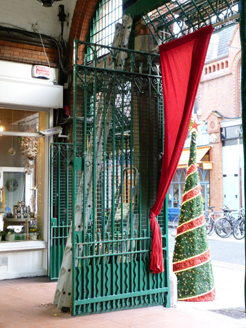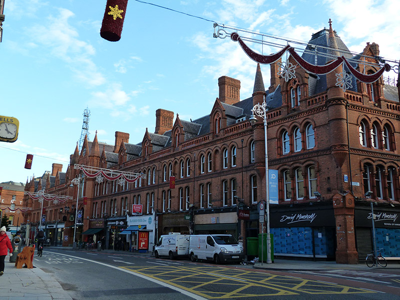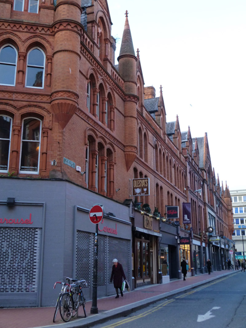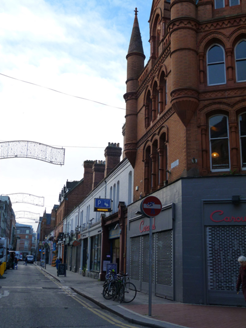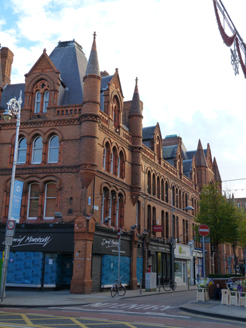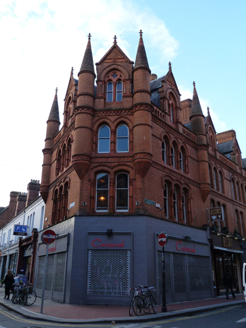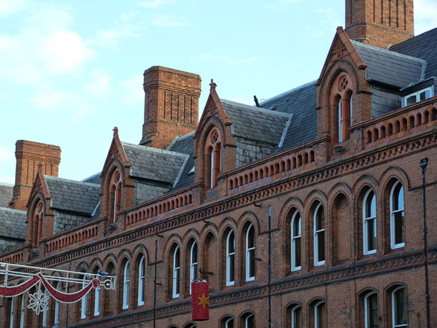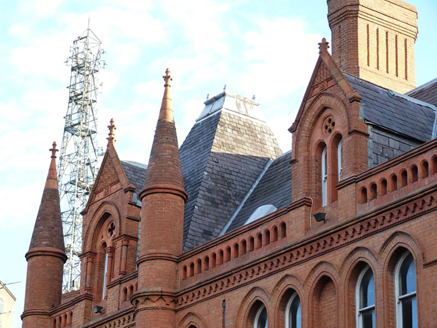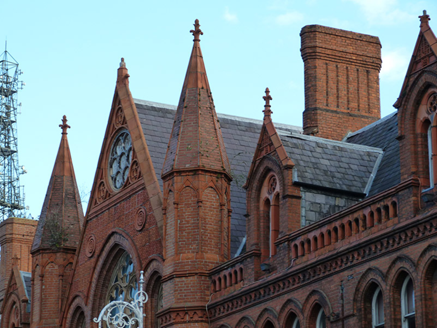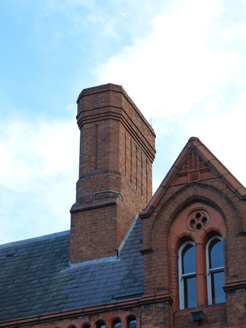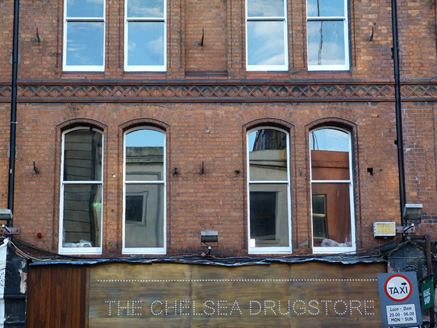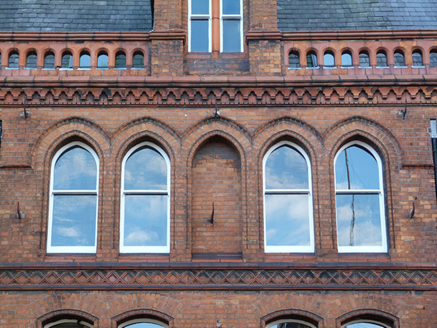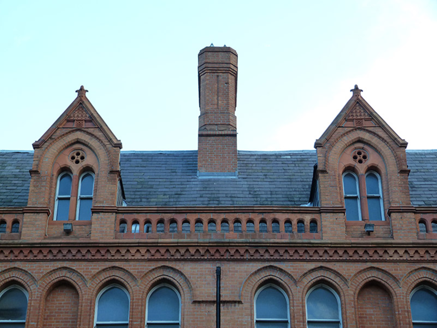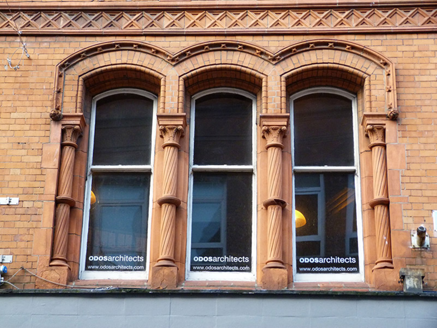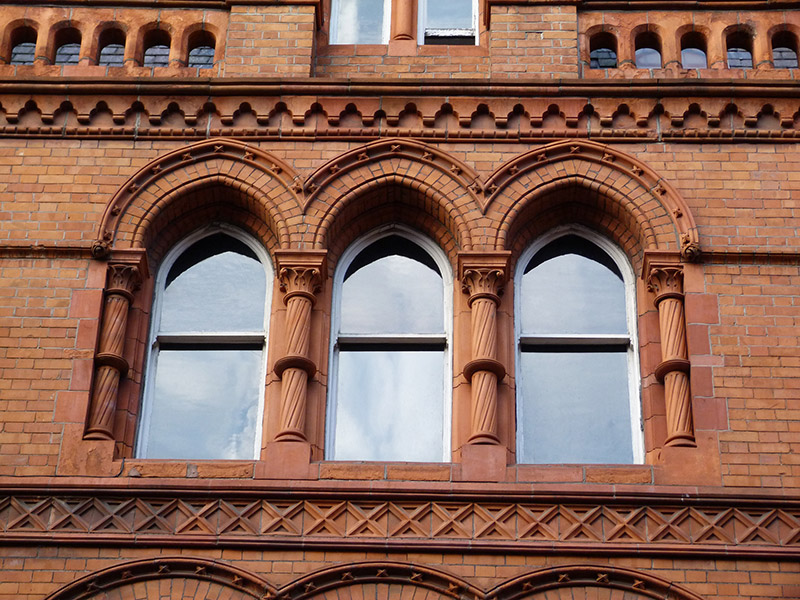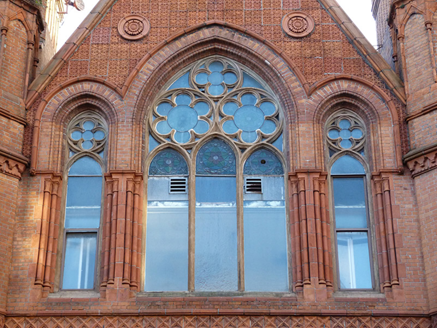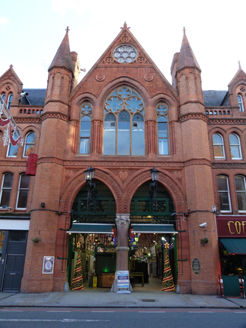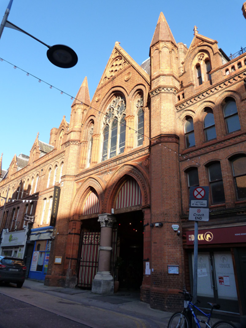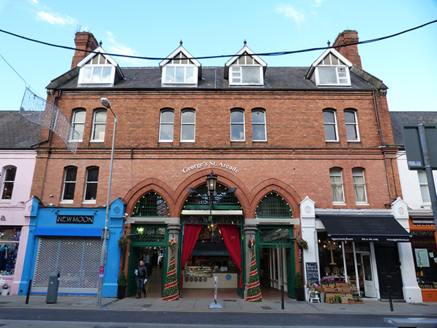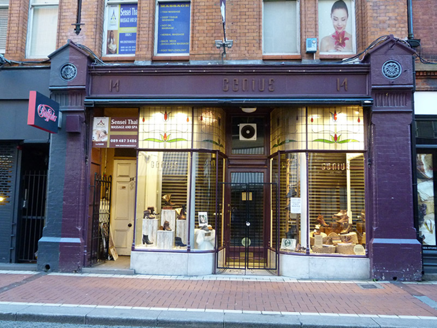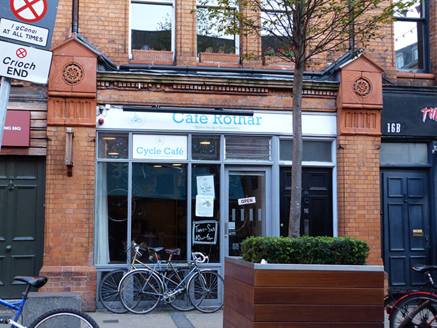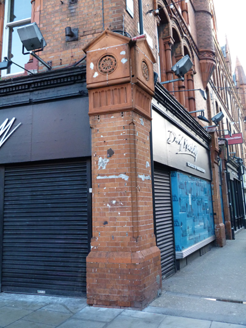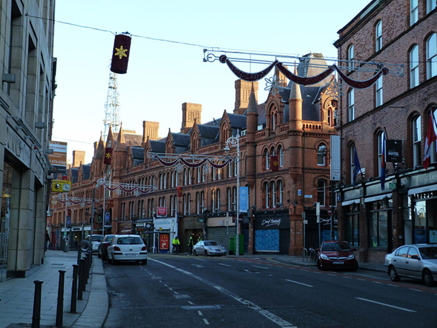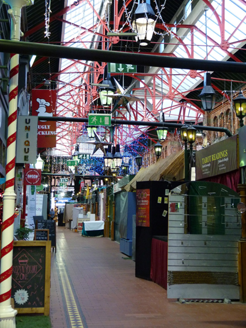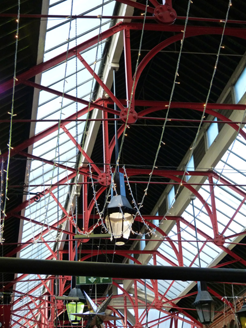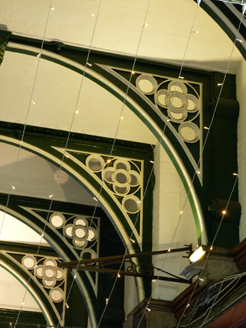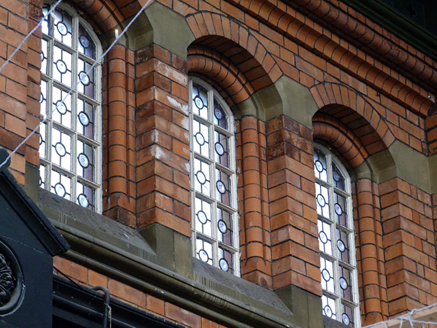Survey Data
Reg No
50910075
Rating
National
Categories of Special Interest
Architectural, Artistic, Historical, Social
Original Use
Market building
In Use As
Market building
Date
1875 - 1895
Coordinates
315688, 233856
Date Recorded
16/11/2015
Date Updated
--/--/--
Description
Freestanding multiple-bay three-storey market building with dormer attic, built 1878-81, occupying whole city block, with turrets to projecting angles, elaborate gabled centrepiece entrance projections to three streets, more modest entrance to fourth, and shopfronts to ground floor throughout. Drury Street facade interrupted by lower eight and ten-bay units. Partially rebuilt in 1892 following fire. Pitched slate roofs having gable-fronted dormer windows, panelled red brick chimneystacks, and cast-iron and replacement uPVC rainwater goods. Red brick balustrade over red brick walls, laid in Flemish bond, with paired terracotta stringcourses above first and second floors, bearing moulded lozenge ornament to first floor and corbel table to second floor. Further moulded impost course to second floor, continuing to form hood-mouldings to window openings. Window openings are variously organized, main elevation having nine quintuplets to second floor, each with blind middle opening, above two pairs of openings to first floor, with single openings to end bays of recessed parts of facade. Fade Street has four triplets, two quintuplets and one single, and Exchequer Street has four triplets, three quintuplets and two singles. Triple windows to turreted projections; projection at corner of Exchequer and Drury Streets has chamfered corner with double window. Segmental-headed openings to first floor and pointed openings to second floor and to paired dormer windows, with bull-nosed red brick surrounds, sloping terracotta sills and one-over-one pane timber sliding sash windows. Continuous hood-mouldings to projections and to first floor openings. Corner towers have terracotta colonnettes between window openings. Dormers have terracotta colonnettes, quatrefoil above windows and decorative foliate terracotta panels to apexes of gables. Triple-light lancet window to entrance projection to main facade, with quatrefoil and sexfoil lights above, flanked by single-light openings with quatrefoils over, separated by reeded colonnettes, and having bull-nosed red brick voussoirs, sloping terracotta sills, terracotta hood-mouldings, and with one-over-one pane timber sliding sash frames to flanking windows. Paired pointed-arch entrances to main and south elevations, with terracotta reveals having engaged colonnettes, and polished marble column to centre with limestone capital, supporting decorative voussoirs and pointed continuous hood-moulding with decorative terracotta shields over, with harp and city crest emblems, framed by engaged octagonal turrets and having blind arcade details below conical caps with finials. Entrance to north elevation similar, but lower part altered and modernized. Four-bay three-storey entrance block to east, Drury Street, elevation having triple pointed-arch gateways, with engaged limestone columns flanking middle one with limestone capitals, carved limestone lintels, moulded red brick voussoirs and red brick hood-mouldings. Typical shopfront comprises brick piers with chamfered arrises, scrolled terracotta brackets with foliate plaques to pediments framing terracotta fascia with dentillated cornice. Interior comprising main market hall running east-west with freestanding stalls and brick-fronted shops. Glazed roof supported on cast-iron brackets. Wrought-iron gates to entrances to east and west. Located in block bounded by South Great George's Street, Fade Street, Drury Street and Exchequer Street.
Appraisal
A competition was held in the 1870s to design a market hall to replace the sprawling Castle Markets that had long occupied this site. The competition was won by the firm of Lockwood and Mawson, who had designed a similar scheme in Birmingham. The building originally comprised a rectangular market hall with shops to the perimeter. Following a fire that damaged the building in 1892, it was rebuilt to the designs of W.H. Byrne, who added rows of brick-fronted shops to the interior. The façade is enlivened by a variety of single, paired and triple windows, decorative mouldings and columns. Richly carved terracotta is used effectively to add artistic detailing to the façade. The roof-line is punctuated by gabled entrance blocks, angled corner turrets and gable-fronted dormers. The building entirely fills the block between South Great George’s Street, Fade Street, Drury Street and Exchequer Street, and similar but smaller-scale buildings are found on nearby Castle Market Street.
